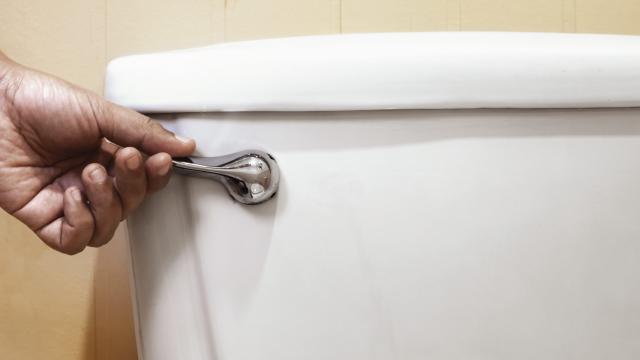Toilets account for nearly 30% of household water use according to the EPA, which means that replacing old ones with newer, more efficient models can take a serious bite out of your water bill. Unfortunately, the significant up-front costs are a dealbreaker for lots of people, leading some to embrace creative water-saving solutions — like putting a brick in the tank.
[referenced id=”882172″ url=”https://www.lifehacker.com.au/2019/04/you-need-the-kind-of-electronic-toilet-thats-popular-in-japan/” thumb=”https://www.gizmodo.com.au/wp-content/uploads/sites/4/2019/04/24/882172-1015440997-maxresdefault-300×169.jpg” title=”You Need The Kind Of Electronic Toilet That’s Popular In Japan” excerpt=”Everyone poops. But not everyone poops the same.”]
The idea behind this classic DIY hack is simple: Putting a brick in a toilet tank takes up space, reducing the amount of water used for each flush. When done properly, it does work — but if you’re not careful, your clever low-flow setup can either do nothing at all or seriously damage your toilet and plumbing. Here’s what you need to know to do it right.
Figure out your baseline
If your toilet was manufactured and installed after 1994, it’s already fairly efficient. Pre-1994 toilets can use more than three times that amount, and that’s before you consider age-related inefficiencies like leaks and slow refills.
[referenced id=”702026″ url=”https://www.lifehacker.com.au/2015/12/measure-your-water-usage-for-leaks-to-keep-your-bill-low/” thumb=”https://www.gizmodo.com.au/wp-content/uploads/sites/4/2015/12/08/lwoj7wfcakhdhrpze9fe-300×169.jpg” title=”Measure Your Water Usage For Leaks To Keep Your Bill Low” excerpt=”Ready for another utility bill annoyance? Your water bill might be higher than it needs to be. Even if you think nothing in your house is leaking, do a periodic check to make sure your bill isn’t unnecessarily inflated.”]
On one hand, the older your toilet is, the more you stand to save by reducing its water usage. On the other, if your toilet is 30 years old, you (or your landlord) should really just replace it. Modern high-efficiency models use 1.3 GPF or even less, and no amount of displacement can get an old toilet anywhere close to that number. At most, it’ll save around 0 l per flush — better than nothing, but not exactly a dramatic reduction.
Skip the brick and use a bottle
Even though it’s a common suggestion, putting a brick in your toilet tank isn’t a great idea. Bricks are filthy to begin with and break down over time, potentially depositing all kinds of gunk into your toilet’s flush mechanism. Wrapping the brick tightly in a plastic bag or two and sealing it with duct tape can help, but you’re much better off filling a plastic 2-litre bottle with water, rocks, or sand and using that instead. It displaces water just as well as a brick, with a far lower risk of causing serious damage to your toilet.
Placement matters
Whether you’re using a brick or a bottle, your displacement object won’t do anything if it sits under your tank’s lower fill line. Here’s how SFGate Home Guides explains it:
“Before you flush a toilet, the water fills the tank up to the higher water-level line. … As you flush, the water drains down to the lower fill line, then slowly starts to fill until it reaches the higher line once more. If your brick sits in the water completely submerged beneath the low fill line, [it] does nothing to conserve water.”
Keep in mind that you’re not displacing a whole brick or bottle’s worth of water with every flush — you’re only displacing the volume that’s above the lower fill line. If your bottle hits that line at the neck, then you’re only saving a bottleneck’s worth of water. For maximum efficiency, position the object so that most of its volume is above the lower fill line.
Always think longterm
The bottom line is that displacement can cut back on your toilet’s water usage, but not by much. If you’re serious about making your home more water-efficient and are in a position to upgrade the toilets, that should be your ultimate goal. Until then, think of your toilet brick (or bottle) like a Band-Aid, not a cure — and don’t forget to take it out before you move.

Leave a Reply
You must be logged in to post a comment.